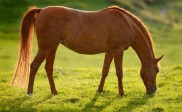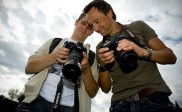A Beginner’s Guide to Astrophotography – Part 1
Often referred to as being somewhere between art and science, astrophotography is a specialized type of photography that is aimed at recording images of the night sky and of astronomical objects. Thanks to the development of technology in recent years, astrophotography has become more accessible now than ever. The reason why astrophotography is so popular is that thanks to long exposures, we can now capture details of the night sky that are invisible to the naked eye.
Some of the most impressive images in the world that capture the beauty of the universe were taken through the Hubble telescope, which is in fact a very large camera that photographs deep space. Being in outer space, Hubble can photograph without the interference of light we have on Earth, such as from buildings, street lights or reflections from the clouds.
Similar photographs to the ones taken by Hubble can be achieved on Earth too with a good camera and a telescope, but on a smaller scale. In the first part of the article, we will discuss how to take astrophotography with only a camera, while the second part will be aimed at astrophotography with the help of a telescope.
How to shoot the sky
Astrophotography may seem to be a complicated type of photography, but to get started you really only need a camera and a tripod. Of course, better results can be obtained if you shoot through a telescope, but you can get great images of the night sky without it as well. Many photographers start with astrophotography like this. Using a camera to record images of the sky is a great thing for astronomers too, because even if you have a telescope, you won’t be able to see the details you get when using a camera with a long exposure.
Now, thanks to the new improvements in technology and the manufacturing of digital cameras, even a basic DSLR camera can be used, as they can now photograph with less noise compared to previous models. You can use your digital camera and a tripod to shoot the night sky, the planets, the moon, and constellations.
Before you get started, you should know the basics of how to use your camera’s manual shutter speeds, aperture and ISO settings. Different cameras have different settings that work well and depending on your camera, you should find a high ISO value that is acceptable; the highest value on your camera could be too noisy, so you should try and see which one works best.
What settings to use
For astrophotography, you must use the following settings as a guide to achieve good results:
– The aperture must be wide open, the wider the better. If you have lenses that can be used to shoot an aperture of f/1.8 or f/2.8, then use those. If you shoot in an area with light pollution then you should use a medium aperture opening, somewhere between f/5.6 f/11, otherwise you can end up with a glowing sky. You should try to experiment with these to find the best setting for you camera’s aperture according to your location.
– The ISO value must be high, for example 800, 1600 or more for better cameras. Try to find a value that is high enough to capture even the dimmer stars but that won’t produce too much noise or grain.
– The shutter speed of the camera must be set to a long exposure, a couple of seconds, and to one minute or more if you want the “star trail” effect. Most cameras have a maximum exposure time of 30 seconds. For a longer exposure you may have to use the bulb function for which you need a cable or remote release. Due to the Earth’s rotation, objects in the sky will appear to be “moving” and because of that, if you only shoot with a camera on a tripod you must use an exposure time of less than one minute. A longer exposure will cause the stars to leave trails of light and appear to be moving. You should experiment with different exposure settings to find the best setting for your photograph.
– Focus. Although everything else seems more complicated than with normal, everyday photography, in astrophotography focusing doesn’t really matter. You must set your camera to manual focus and set that to focus to infinity. This means the camera will be set to focus to the farthest point possible.
– White balance. Due to the light pollution, which is a really big problem if you live in a city, shooting with the white balance set to default isn’t a good idea. Using this setting when photographing the night sky will cause it to have a slightly red or brown color. Try and use the tungsten setting of the white balance for better, more natural results.
– Use a good tripod. Your camera must not move during the exposure of the night sky; even the slightest movement will make the stars appear unclear on the photograph.
How to achieve the “Star Trail” effect
The movement of the Earth can have a good side too when it comes to astrophotography. You can use the Earth’s rotation to achieve more artistic photographs of the stars by using a very long exposure, up to several hours.
The best way to do this is to point your camera towards the North Star or Polaris, if you live in the northern hemisphere. Polaris is located above our planet’s axis, so from our point of view it will appear in a fixed position to the night sky. It is the brightest star in the constellation Ursa Minor, a more common name is the Little Dipper, and it’s easy to locate it.
You can achieve the “Star Trail” effect in two ways. Either you point the camera to the Northern Star and you will get a circular effect of the stars, or you point the camera anywhere else and you’ll get the trails passing from one edge of the photograph to the other.
I, personally, would go for the first option and center the camera to the Northern Star as the result is more artistic, the stars around Polaris will look like they’re circling it and will leave beautiful trails of light.
In order to obtain great photos with the “Star Trail” effect, you should keep in mind the settings recommended above. The difference is that the exposure time is now a lot longer, the best results will be achieved with an exposure of several hours. Make sure you have a fully charged battery in your camera as this drains the battery pretty fast.
Another important aspect that will help you achieve great results is finding an interesting background for the stars, such as a landscape with mountains or trees. This can give you spectacular results.
Keep in mind that in order to get good results with this, you will need an environment with no light pollution, ideally somewhere in nature as the landscape will be great.
The final touch
After you take the photographs, you will probably need to make a few adjustments in an image editing software. Always take a look at the images from your camera at 100% magnification to see what the level of noise is. You will take images with very long exposure times and you will most likely have some sort of noise on the images. You could try and use software such as Adobe Photoshop, or other free alternatives to remove some of the noise with their noise removal filters. Some cameras also have built-in noise reduction options. You can also try and adjust the image’s color balance, brightness and contrast to make it more appealing.
Astrophotography is sometimes difficult, but with a little work you can achieve really spectacular results. In the second part of the article we will discuss how to take great photographs by using a telescope.
Below are some great examples of astrophotography
Photo by NASAJPL

Photo By Andy Kent

Photo By Christian Grosch

Photo By Hal NL

Photo By Hörður B. Karlsson

Photo By Tim phillips photos





love those shots…. high up on my must try list…
Thanks Valentin for this article. Great to learn something about Astrophotography.